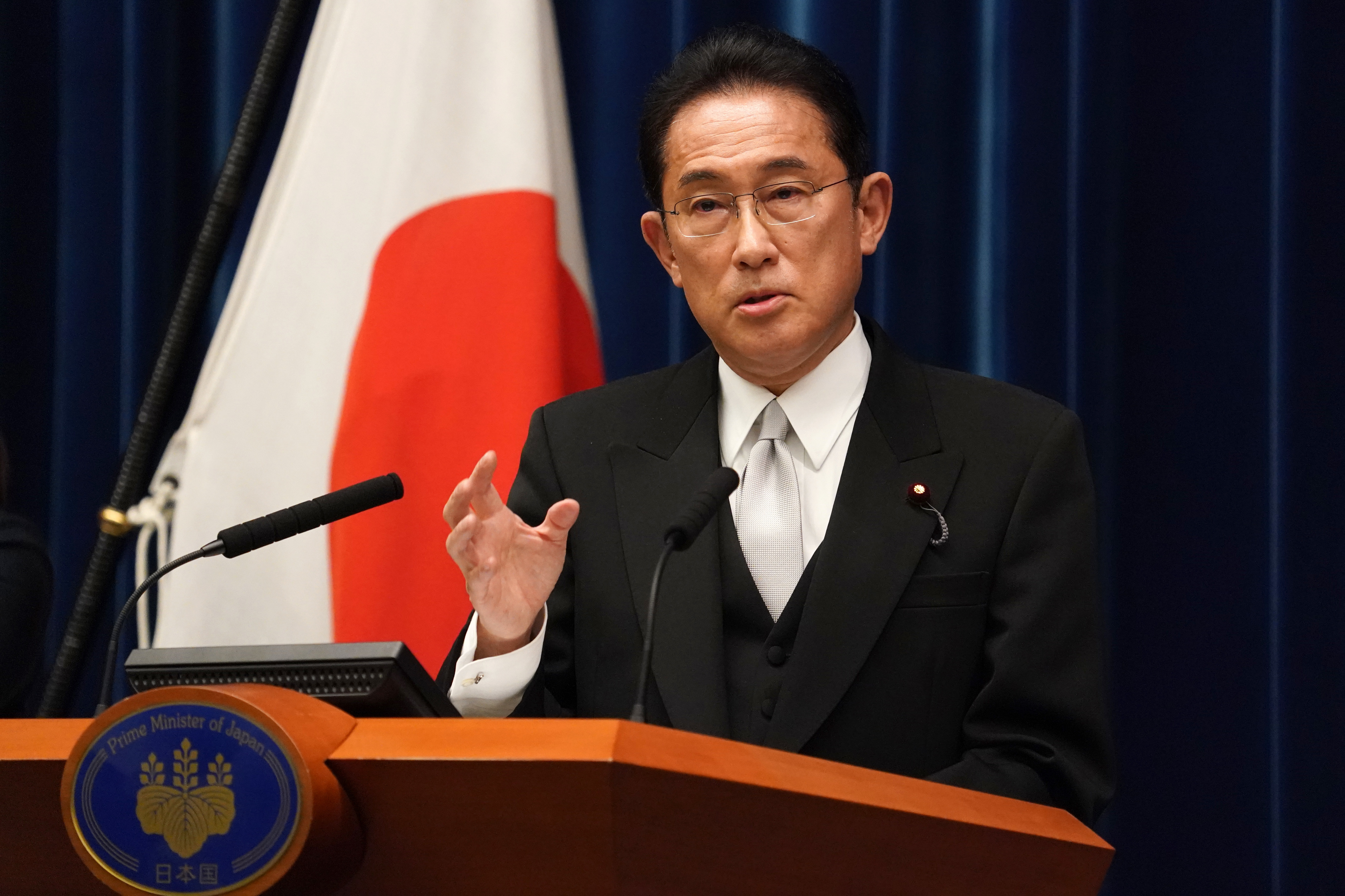The March 11 earthquake and tsunami in the Tohoku and northern Kanto districts were a painful reminder of our vulnerability in the face of nature's terrifying power. They have also left us vulnerable to a disaster of a very different sort: a financial meltdown precipitated by a market tsunami.
After the Earthquake, the Vultures
In his recent book Justice: What's the Right thing to Do? political philosopher Michael Sandel launches his discussion of ethics by recalling the ruthless price gouging that marked the aftermath of Hurricane Charley, which ravaged Florida in 2004. Gas stations were selling 2 dollar bags of ice for 10 dollars, and stores were charging 2,000 dollars for household generators that ordinarily went for 250 dollars, he writes. An outraged USA Today headline read, "After Storm Come the Vultures."
In Japan, however, one hears no reports of price gouging in the wake of the catastrophic Tohoku earthquake and tsunami, notwithstanding severe local shortages of water, gasoline, and other essential commodities. To the contrary, we read again and again of acts of selflessness on the part of people in the stricken areas—like the shoppers who ran out of a convenience store in a panic when the quake hit but returned afterward to pay for the small items they had taken with them in their haste.
As capitalist economies, Japan and the United States are presumably subject to the same universal free-market principles. And yet our markets respond to similar circumstances in very different ways. The decisions of market participants are conditioned by their cultural backgrounds. When market participants respond differently, the price formation mechanism operates differently as well.
We have already had a taste of the response of international traders. Less than a week after a disaster that is sure to deliver a body blow to Japan's economy, the nation's currency surged to 76 yen to the dollar. The reason for this development, we were told, was that Japanese insurance companies were getting ready to repatriate their foreign assets to yen to pay out insurance claims. In fact no such sell-off of foreign assets has taken place among Japanese companies, but international speculators jumped in anyway, hoping to profit from the misfortune of others. After the storm come the vultures.
The secondary disaster threatening Japan now is a "market tsunami" precipitated by these disaster profiteers. A likely object of their speculation will be the Japanese government bond market. Japan must keep this lurking danger in mind as it considers the best way to finance the monumental project of post-quake reconstruction.
Economic Relief Measures
The cost of Japan's recovery from the disaster has been estimated at more than 20 trillion yen, and the bill could climb considerably higher depending on how the situation unfolds at the Fukushima Daiichi Nuclear Power Station. With this in mind, the Japanese government needs to devise both immediate relief measures to promote a recovery and middle-term fiscal measures for the reconstruction of east Japan. Let us consider each in turn.
From a short-range perspective, the most obvious need is for funding to finance relief and recovery operations. For this the government needs to move quickly to draw up a supplementary budget relying on contingency funds and cuts in other budget items. It should take the money originally earmarked for the child allowance, the approximately 2 trillion yen set aside to finance a reduction in highway tolls, and the 1 trillion yen in contingency funds built into the fiscal 2011 budget and put those resources to work for emergency relief and reconstruction efforts.
Meanwhile, emergency tax-relief legislation is needed to help businesses rebuild their assets and capital, without which important sources of tax revenue will disappear. To help going concerns regain their footing, the government should institute a "loss refund" system, whereby companies that posted a profit last fiscal year but are like to incur an operating loss this year can receive a retroactive tax refund. Policies adopted after the 1995 Kobe earthquake offer precedents for other tax breaks, such as exemptions from the registration and license tax for real estate transactions related to post-disaster rebuilding and reductions in or exemptions from the fixed assets tax.
For individual victims, the government should offer a special income tax deduction beginning in fiscal 2011. Ideally, this should be administered in conjunction with direct disaster relief benefits in the form of refundable tax credits, but this could prove difficult in the absence of a taxpayer identification number system.
Another important step is to encourage charitable giving through tax incentives. For the fiscal 2011 revision of the tax code, the government has planned a major expansion of this framework, which currently allows tax deductions only for contributions to a narrow category of organizations. We should move quickly to pass the legislation required to implement planned reforms so as to encourage contributions to a wide range of groups, including nonprofit organizations.
Lessons from Germany
The next question is how to finance this costly reconstruction over the medium and long term. The government should draw up a carefully considered recovery master plan and establish a special reconstruction fund. The plan should be designed not only to chart a road to reconstruction for the nation but also to demonstrate to the world that Japan has a viable plan for getting back on its feet.
To cover costs over the next few years, the government will have no choice but to float reconstruction bonds, but it needs to keep the time to maturity within the reconstruction period (say five years). Floating government bonds irresponsibly could encourage the financial "vultures" to begin dumping Japanese government bonds on the market in hopes of a windfall.
As for middle-term financing of this kind of reconstruction program, recent history offers us a model worthy of emulation. This is the German government's approach to funding reconstruction of the former East Germany following German reunification in 1990.
West Germans understood from the beginning that German reunification would mean rebuilding the economy and supporting the people of the formerly communist East. With this in mind, a political decision was taken to treat the currencies of the two nations as being equal. In addition, German Chancellor Helmut Kohl declared that since reunification was the wish of the German people, Germany would raise the necessary reconstruction funds itself.
Germany was as good as its word, and despite the monumental costs of economic reconstruction, unified Germany soon emerged as the strongest economic power in the European Union.
How, then, did German cover the costs of reunification? It managed with a combination of budget cuts and something called the "solidarity tax." Germany's solidarity tax is not actually a separate tax but a surcharge added onto the income tax already levied on individuals and corporations. To spread the burden around as widely and fairly as possible, the government charged wage earners and businesses a surtax equal to 7.5% of their regular tax bill. The fact that the surtax could be administered within the existing tax regime minimized any additional costs.
Germany chose not to add a surtax onto its value-added tax out of concern that a uniform hike in taxes on consumption would have a regressive effect, disproportionately impacting low-income households and hurting the former East Germans they were trying to help. How can Japan learn from Germany's experience?
Toward a Japanese Solidarity Tax
I believe that the funds needed for long-term recovery from the earthquake and tsunami should be raised primarily by means of just such a "solidarity surcharge" on the income tax paid by Japanese individuals and corporations in addition to cuts in other government programs. Domestically, affirming our intention to shoulder the full burden ourselves, instead of passing it on to future generations, will enhance the sense of solidarity between the victims of the tragedy and those called on to assist them. Internationally, it will send a strong message inspiring confidence in Japan's ability to come back strong.
Under the fiscal 2011 budget, combined revenues from income and corporate taxes were approximately 20 trillion yen. On the basis of this figure, a surtax of 10% should generate an additional 2 trillion yen a year. If the government cost of the recovery comes to 10 trillion yen as projected, revenues from the surtax should be enough to cover the full amount in five years.
Because income and corporate tax rates are graduated according to income level, a relatively small surcharge levied as a percentage of the ordinary tax bill would ensure that the burden was imposed in proportion to one's ability to pay. It would also enable the government to readjust the tax rate according to the pace at which the recovery was progressing. That said, the government will need to state clearly when the recovery period is scheduled to end and make the solidarity surtax a closed-ended measure of limited duration.
In all likelihood such a surtax will have to be supplemented by increases in various commodity taxes, such as for gasoline. We should begin by reviewing the preferential tax treatment for financial income, such as stock sales and dividends.
Some have proposed raising the consumption tax from 5% to 6%, but in Japan's rapidly aging society, the intergenerational balance of burden and benefits should be a key consideration when setting the consumption tax rate. It seems to me that we can focus more lucidly on this problem if we keep the consumption tax separate from the issue of financing Japan's post-disaster reconstruction. The final decision on consumption tax rates should be made in the context of an integrated plan to reform the social security and tax systems, as the current government has promised.
The direct damage from the March 11 earthquake and tsunami was limited to the eastern half of Japan. But east and west must stand together if we are to avert another disaster. With the threat of a market tsunami looming, our generation needs to demonstrate solidarity and show the world that it is committed to working together in support of a recovery.























